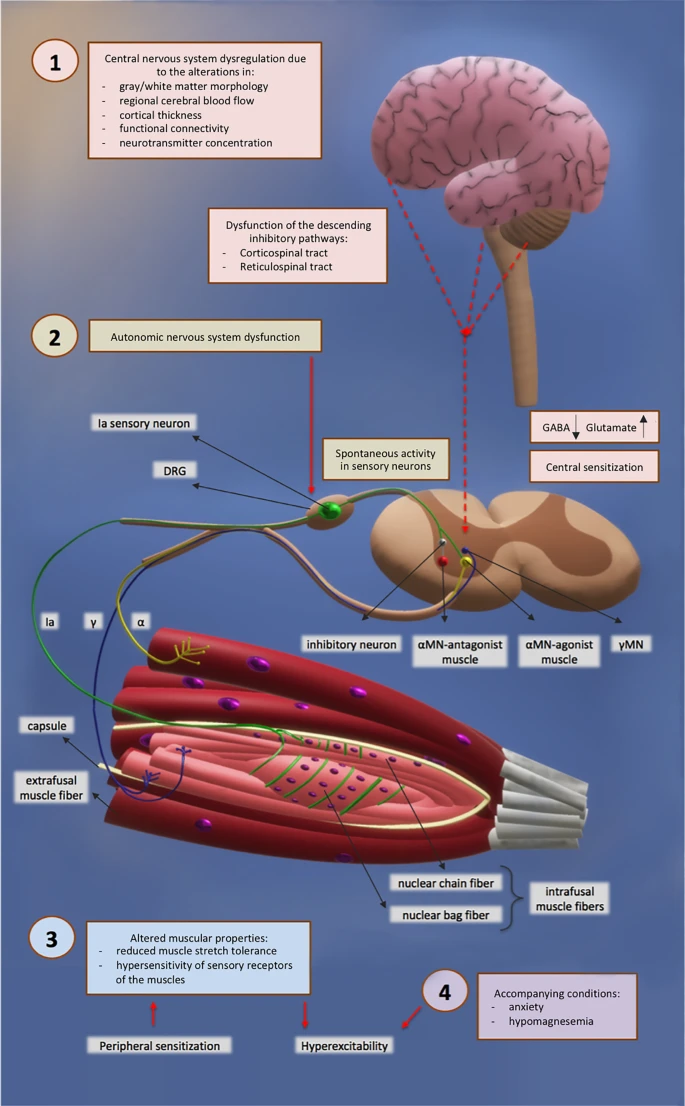Andy
Senior Member (Voting rights)
Abstract
Fibromyalgia is a complex condition characterized by widespread pain, fatigue, and various other symptoms. The symptoms of fibromyalgia overlap with numerous other disorders (e.g., infections, chronic fatigue syndrome), which makes diagnosis challenging. Existing diagnostic criteria for fibromyalgia rely particularly on subjective patient reports. Such a limitation may lead to both missed diagnoses and potential overdiagnoses.
Recent research has identified significantly increased deep tendon reflex (DTR) responses in patients with fibromyalgia. The results also demonstrated the potential for DTR examination to help with the diagnostic process, particularly with ruling out fibromyalgia. The potential underlying mechanisms behind the increased DTR responses in fibromyalgia are central nervous system dysregulation, altered muscular properties, autonomic nervous system dysfunction, and accompanying conditions such as hypomagnesemia and anxiety. By integrating DTR responses into current diagnostic criteria sets, physicians may more effectively differentiate fibromyalgia from other conditions and avoid the pitfalls of misdiagnosis, as well as overdiagnosis.
The use of DTR testing in the diagnostic evaluation of fibromyalgia shows promise. Yet, it has both advantages and limitations. The potential benefits of this approach include improved diagnostic accuracy, but challenges remain in its low specificity. This means that hyperreflexia testing alone is not definitive in diagnosing fibromyalgia. Nonetheless, given the high sensitivity, a decreased DTR response could still contribute to ruling out fibromyalgia.
Open access
Fibromyalgia is a complex condition characterized by widespread pain, fatigue, and various other symptoms. The symptoms of fibromyalgia overlap with numerous other disorders (e.g., infections, chronic fatigue syndrome), which makes diagnosis challenging. Existing diagnostic criteria for fibromyalgia rely particularly on subjective patient reports. Such a limitation may lead to both missed diagnoses and potential overdiagnoses.
Recent research has identified significantly increased deep tendon reflex (DTR) responses in patients with fibromyalgia. The results also demonstrated the potential for DTR examination to help with the diagnostic process, particularly with ruling out fibromyalgia. The potential underlying mechanisms behind the increased DTR responses in fibromyalgia are central nervous system dysregulation, altered muscular properties, autonomic nervous system dysfunction, and accompanying conditions such as hypomagnesemia and anxiety. By integrating DTR responses into current diagnostic criteria sets, physicians may more effectively differentiate fibromyalgia from other conditions and avoid the pitfalls of misdiagnosis, as well as overdiagnosis.
The use of DTR testing in the diagnostic evaluation of fibromyalgia shows promise. Yet, it has both advantages and limitations. The potential benefits of this approach include improved diagnostic accuracy, but challenges remain in its low specificity. This means that hyperreflexia testing alone is not definitive in diagnosing fibromyalgia. Nonetheless, given the high sensitivity, a decreased DTR response could still contribute to ruling out fibromyalgia.
Open access


